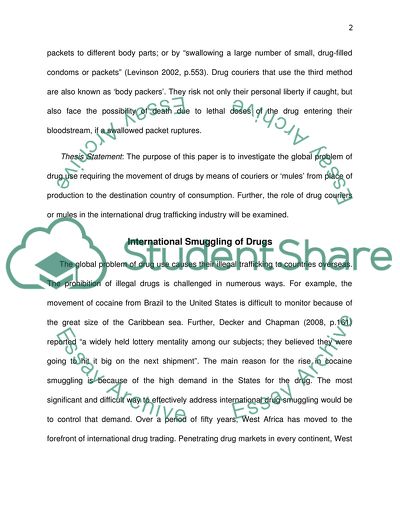Cite this document
(The Role of Drug Couriers and Drug Trafficking Industry Research Paper, n.d.)
The Role of Drug Couriers and Drug Trafficking Industry Research Paper. Retrieved from https://studentshare.org/law/1775361-literature-review-on-the-role-of-drug-couriers-mules-with-the-international-drug-trafficking-industry
The Role of Drug Couriers and Drug Trafficking Industry Research Paper. Retrieved from https://studentshare.org/law/1775361-literature-review-on-the-role-of-drug-couriers-mules-with-the-international-drug-trafficking-industry
(The Role of Drug Couriers and Drug Trafficking Industry Research Paper)
The Role of Drug Couriers and Drug Trafficking Industry Research Paper. https://studentshare.org/law/1775361-literature-review-on-the-role-of-drug-couriers-mules-with-the-international-drug-trafficking-industry.
The Role of Drug Couriers and Drug Trafficking Industry Research Paper. https://studentshare.org/law/1775361-literature-review-on-the-role-of-drug-couriers-mules-with-the-international-drug-trafficking-industry.
“The Role of Drug Couriers and Drug Trafficking Industry Research Paper”, n.d. https://studentshare.org/law/1775361-literature-review-on-the-role-of-drug-couriers-mules-with-the-international-drug-trafficking-industry.


